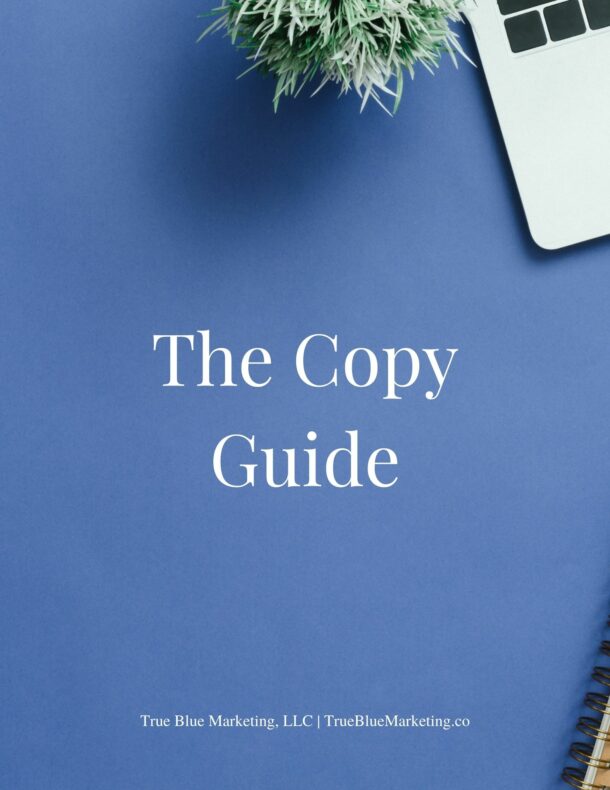Introductions can feel awkward, especially when they start with “What do you do?” and you know your answer will inevitably be long-winded. Not to mention that you know they’ll lose interest before you’ve finished sharing it.
An introduction is something that so many in the marketing world talk about with different terms – elevator pitch, summary, sales message, or statement to name a few. Turning that introduction into an opportunity to pitch directly to the conversation partner is the goal, and rather than landing a solid sales pitch, most introductions feel a bit icky if not totally off-putting. Who wants to be sold to as you’re starting a conversation? And more to the point, who wants to always be this close to selling their work at any moment?
In truth, nearly every introduction self-proclaimed marketing gurus show you how to create is simply too much—too much information, too aggressive, too many words. What if instead of a too-much pitchy message, you had a simple and natural-sounding response to that simple question? One that felt natural for you to share, opened doors to prospects while gentling excluding non-prospects, and didn’t turn off your conversation partner right away.
Before we dive into that, I’ll share a few ideas you may want to read to get caught up so you can create your best introduction for this stage of your business:
- You can’t market to everyone. If you think you can market to anyone, I’d suggest reconsidering who you want to work with for clients. Everyone is pretty wide-open and difficult to target. Check out this post for more on why getting specific about your ideal clients can help you target your marketing and save you time in the process of attracting new clients.
- You must identify your ideal clients. You do need to get some details of your ideal clients sketched out before you can make serious progress with the ideas in this post. You may have heard of this before and I’ll tell you that you don’t need more of what you may have heard for this like a list of all the details about your ideal clients and their lives; like the car they drive, the number of kids they have, and their favorite produce. Check out this post for more on how to do the ideal client avatar exercise efficiently and without the busy work that is pushed by more marketing plans.
- Your introduction is not about you. Surprised? Your introduction is how you share what you do rather than who you are, so the focus is instead on showing how well-suited you are to helping your clients. How you do that is by sharing the specifics of who they are, what they have for problems, and how you know the way from their problem to the solution they want.
With that out of the way, we’re ready to focus on how to nail an introduction that genuinely fits you and your business. You can create an introduction that works for you and your business and start right now.
Please Introduce Yourself!
Anyone who has tried to explain the work they do has heard this request at least a few times especially if you’re networking. Some people jump right into a speedy pitch, plowing through their rehearsed spiel that ends in a sales-y and impersonal request to buy. Others can get very simple with a few words: “I’m in insurance.” It seems that this type of introduction either comes on too strong or falls flat. Instead, we’ll work to hit a happy medium with a few lines that speak to what you do, outline who your ideal clients are, and the work you do to help them.
To genuinely introduce yourself without a sales-y pitch or flat one-liner, lean into the primary details that matter to the situation:
- The people you work with for your business
- The problems experienced by that person
- The solutions you provide to their problems
The specific words you use here will be what matters for your introduction. You’ll want to use the specific words your ideal clients use to describe themselves, their problems, and the solutions you provide to the problems.
Why This Works
By describing your specific ideal client and their specific pain points you will begin to unlock the power of words to attract your ideal clients. How? Anyone who has heard your ideal client talk about their problem/problems will have heard them describe how it looks and feels to them, along with what they believe is the solution to this problem. Sound familiar? It will to anyone hearing your introduction when you have pulled in the language of your ideal clients. They will have heard the description of the pain points already, so repeating them in your introduction is going to have a huge impact on your ideal clients AND anyone who has heard your ideal clients talk about this problem.
By describing their specific pain points in detail you will show:
- How well you know them
- How well you know their problem
- That you can get them from their problem to the solution they need
- And you will have shared what you do in a natural way
You’ll have done all of this without selling directly to your listeners or sounding like a commercial salesman with a canned, unfeeling pitch to anyone within earshot.
Why You Do This Work
Now that you’ve noted all of the details you’ll need to include in your introduction so it lands well, isn’t sales-y and naturally markets your work, keep this last detail in your back pocket in case it comes up in conversation so you’re prepared with a succinct answer: why you do this work.
Having a simple description of why you are motivated to do this work can be a great way to cement your standing with someone who is your ideal client or may know your ideal client. A simple few sentences to illustrate why you turned to this work and how it fits into your bigger-picture goals can go a long way toward relationship-building with new contacts.
Ready to take your website copy to the next level? Get The Copy Guide for free and start chipping away at your website copy today.






